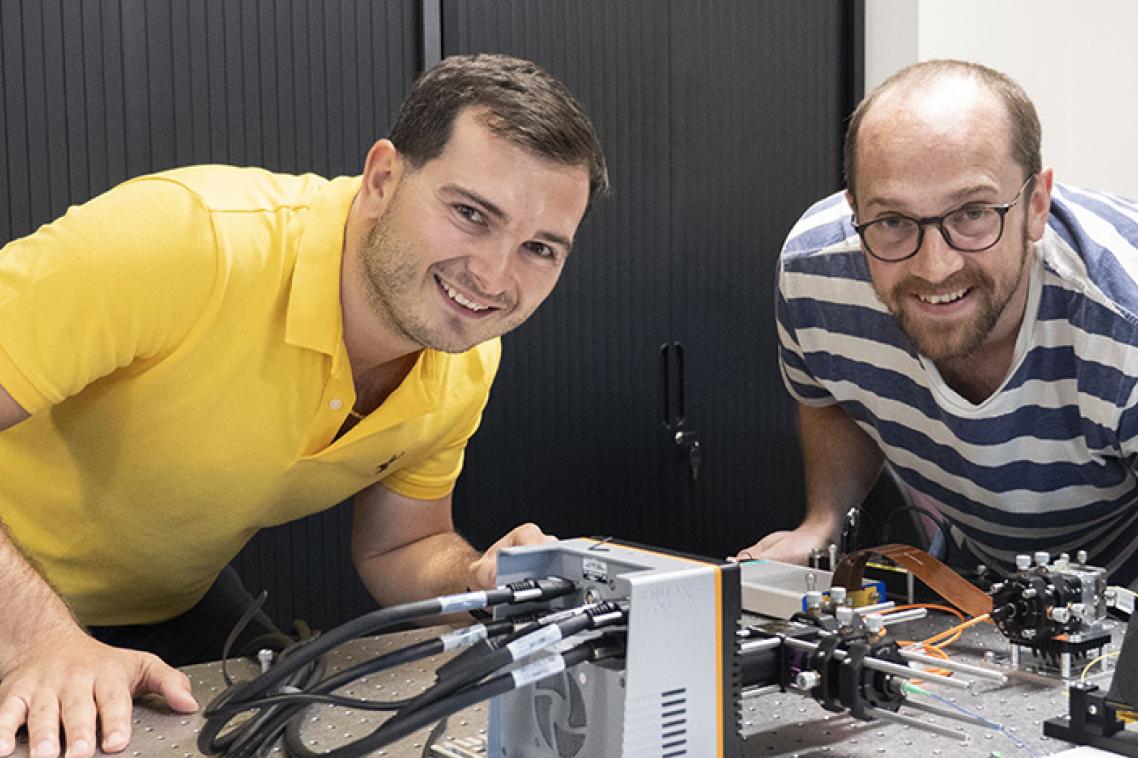Cutting through fog with laser focus

Research from The University of Queensland aimed at controlling light in scattering materials, such as fog or biological tissues, will benefit future biomedical imaging and telecommunications.
Optics researchers Dr Mickael Mounaix and Dr Joel Carpenter have found a new way of controlling how light travels through different materials at different times using optical fibres.
“The reason you can’t see through a solid brick wall is pretty straightforward - the wall absorbs the light so no image or information can get through,” Dr Mounaix said.
“The reason you can’t see through scattering materials like fog is quite different – most of the light gets through, it’s just completely scrambled and unrecognisable.”
Scattering materials like fog, cloud, a glass of milk or biological tissues have complex microscopic structures, and when light travels through these materials, it interacts with them.
“Light may enter the cloudy material as a single spot at a single point in time, however as it travels through the material the light gets scattered,” Dr Carpenter said.
“On the other side, you end up with light arriving at many different places at many different times.”
Most of the research during the past ten years has focused on controlling the spatial properties of beams of light, but the UQ-based research shows how to control light’s properties in time.
“For many applications, it’s more important that the light arrives at the desired time, rather than what the light beam looks like as an image,” Dr Carpenter said.
In this research article, the authors demonstrate how to deliver short optical pulses at very precise times, after propagation through an optical fibre.
“Such optical fibres were avoided in the past half century because of the scattering they induce, but now that we can adjust these effects, they will play a key role for in-vivo biomedical imaging and telecommunications in the near future.”
This paper was published in Nature Communications.
Media: Dr Mickael Mounaix, m.mounaix@uq.edu.au, +61 7 3365 3529; Genevieve Worrell, g.worrell@uq.edu.au, +61 408 432 213.
Related articles

New data reveals how Australia’s threatened reptiles and frogs are disappearing – and what we have to do

Sunlight-powered breakthrough turns methane into valuable ethylene
Media contact
UQ Communications
communications@uq.edu.au
+61 429 056 139
